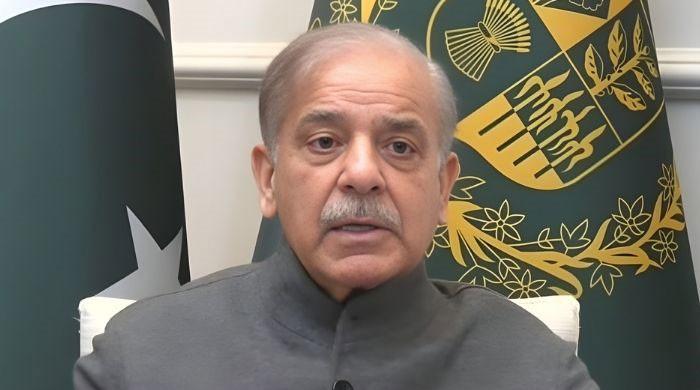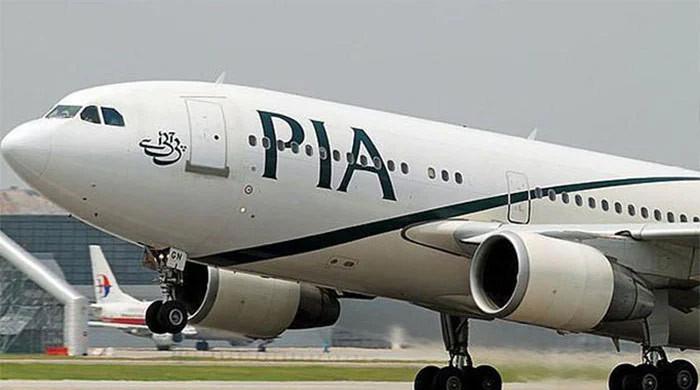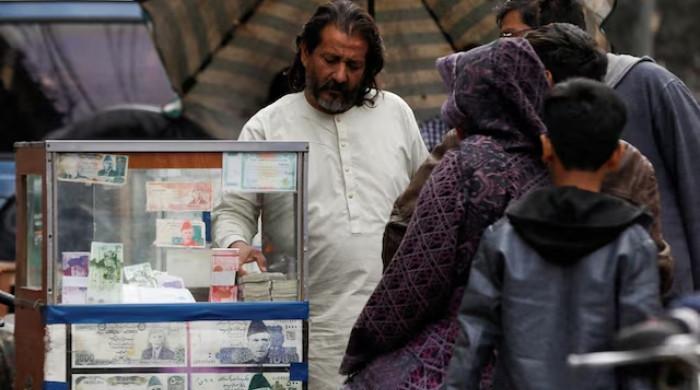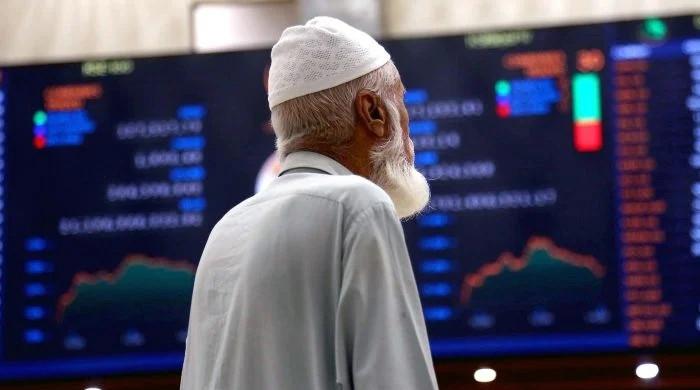Rupee free fall persists for sixth straight session
At week's close, rupee cumulatively loses over 9 or 4.2% as demand pressure weighs on the local unit
September 09, 2022

- Local unit trades at 228.18 after losing 2.76 in interbank market.
- Rise in imports has led to increased pressure on rupee.
- Political instability, floods, other factors also behind rupee's fall.
KARACHI: The Pakistani rupee persisted in losing its value on Friday for the sixth straight session against the US dollar as the country continues to suffer an economic hit caused by heavy floods.
The local unit closed at 228.18 after losing 2.76 in the interbank market, down in value from yesterday's close of 225.42 — when it lost Rs2 — according to the State Bank of Pakistan (SBP).
Pakistan's currency has cumulatively fallen by 9.21 or 4.2% against the greenback since this week's trade began and is seemingly on the same pattern that was witnessed two months back — when the local unit hit 239.37 on July 28.
Currency dealers have said the pressure on the rupee is due to a shortage of dollars in the market as there is a higher demand for the greenback after the government scrapped the ban imposed on the import of luxury goods.
They also noted that like the rise in imports, remittances and exports did not increase to the required amount, thus, causing a disruption in the supply-demand position of the dollar.
Apart from these, the dollar's strengthening globally is also leading to the greenback's appreciation against the rupee. The US dollar, which compares the value of the dollar to six important rival currencies, increased 0.04% to 109.73 after peaking at 110.79 on Wednesday — a level not seen since June 2002.
Other factors causing the rupee's depreciation include political unpredictability, decline in investor confidence in the economy, higher foreign exchange requirements (due to flood-related expenses, a backlog of letters of credit payments, and increased Afghan trade), and slower inflows.
The cost of damage and devastation caused by the floods across Pakistan has surpassed the International Monetary Fund’s (IMF) loan disbursement.
Initial estimates place the economic damage caused by the severe floods in Pakistan at a staggering $10 to $12.5 billion, this is amidst a time when the government also intends to drastically reduce the Public Sector Development Programme (PSDP).
Analysts said that the resumption of the IMF loan programme did allay concerns about a scenario that would have been difficult to handle in the near future, and gave rise to hopes of unlocking money from other multilateral lenders and friendly countries.
The greatest floods, which have hit the economy in decades, are likely to cause a slowdown in economic growth. The widespread deluge has damaged standing cotton and rice harvests, which would also reduce the country’s exports and widen the current account deficit.
Country-wide destruction has also necessitated the urgency for rescue and relief, for which the government has been purchasing more essentials.
“The rupee has recovered after the State Bank of Pakistan withdrew its decision to allow the exchange companies to export US dollars to the international market,” a currency dealer told The News.
The Civil Aviation Authority’s (CAA) requirement that all foreign cash held by arriving international passengers be declared would add to the pressure already being placed on the rupee.
In accordance with the CAA's announcement, a declaration form containing information about domestic and foreign currencies should be completed and given to airline workers.
The limitation was put in place to adhere to the Financial Action Task Force (FATF) guidelines.
Currently, travellers are hesitant to bring in foreign currencies. After the central bank allowed the export of US currency, approximately $7 million have been exported by exchange companies since August 15.









